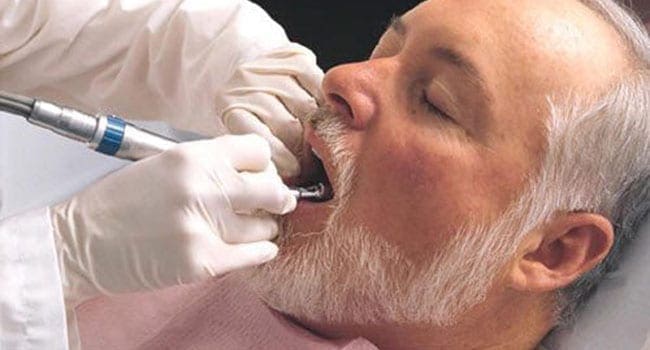By Jacquie Maund
Alliance for Healthier Communities
and Hazel Stewart
Toronto Public Health
April is oral health month in Canada. Ads remind us to book an appointment with our dentist for a regular dental exam and to get our teeth cleaned by a dental hygienist. But in Canada’s private dental-care system, you have to pay for both of these oral health services.
So what if you can’t afford to see a dentist or dental hygienist? You’re not alone.
Approximately one in six Canadians has difficulty getting oral health care because they can’t afford it, they don’t have dental insurance or it’s too expensive to travel to the nearest provider.
In Ontario, it’s estimated that two million to three million people haven’t seen a dentist in the past year – the main reason cited being cost.
Ontario has some public dental programs for children under 18 years of age in very low-income families. There’s also a patchwork of basic dental programs for people receiving social assistance. There are no dental health provincial programs for low-income adults and seniors.
The most vulnerable people in our communities don’t have access to dental care: low-wage workers and their children; seniors and the institutionalized elderly; new Canadians; and indigenous people. So it should come as no surprise that these are the Ontario groups with the highest rates of tooth decay, dental pain and gum disease.
Oral diseases affect a person’s general health and overall well-being.
There’s a link between poor oral health and the severity of chronic conditions such as diabetes, cardiovascular and respiratory diseases. Oral diseases and missing teeth also affect a person’s sense of self-worth and their ability to get employment. It’s tough to look for a job while experiencing dental pain or if you’re missing front teeth.
So what are people doing when they’re in dental pain but can’t afford to see a dentist?
Many turn to their family doctors in the hope they can get help. Some, in desperation, try to treat the pain themselves or go to black market dentists who aren’t qualified to provide care.
In 2014, there were almost 222,000 visits to Ontario physician offices for teeth and gum issues. That means that approximately every three minutes, someone went to an Ontario doctor’s office seeking care for a dental problem.
But physicians are not trained or equipped to deal with diseases affecting teeth and gums, so they can’t provide appropriate treatment.
The Ontario Health Insurance Plan (OHIP) pays a doctor a minimum of $33.70 per 15-minute patient visit. So these dental-related visits added up to at least $7.5 million of additional costs for Ontario’s health-care system in 2014 alone, with no proper treatment of the underlying health issue. This is a waste of physicians’ valuable time and public funding.
It’s time to develop an effective public solution to this oral health-care problem. It’s time to acknowledge that the private dentistry model doesn’t meet the needs of low-income and vulnerable people. And it’s time to stand firm and say the status quo is unacceptable.
A recent survey by the Ontario Oral Health Alliance found that many private dental practices refuse to accept adults who are on social assistance programs. Many private dentists admit they’re frustrated because low-income people can’t pay and often miss appointments.
Research shows that most people living on low income prefer to be treated in public dental clinics where they are welcomed and valued and don’t experience stigma.
Let’s build on this evidence and work toward the goal of equitable access to oral health care for everyone in Ontario.
Public health-care dollars spent on acute care for oral health in emergency rooms and physician offices would be better spent expanding public oral health programs to low income adults and seniors, delivered through models that are truly accessible for the elderly, people living on low incomes, newcomers and indigenous people.
Such models include delivering services within community health centres, aboriginal health access centres, public health units and via public mobile dental buses. In other words, in places where many vulnerable people already access their health and social services.
At community health centres, low-income people can get their teeth checked while being referred to other appropriate services, such as diabetes management programs, the mental health team, nutrition programs and primary health care all delivered at the same location.
So this April, let’s talk about how to best meet the oral health needs of people who cannot afford private dental care – because we all deserve a healthy mouth and smile.
Jacquie Maund is the Policy and Government Relations Lead at the Alliance for Healthier Communities. Dr. Hazel Stewart is the Director of Dental and Oral Health Services in Toronto Public Health.
Jacquie and Hazel are Troy Media Thought Leaders. Why aren’t you?
The views, opinions and positions expressed by columnists and contributors are the author’s alone. They do not inherently or expressly reflect the views, opinions and/or positions of our publication.



